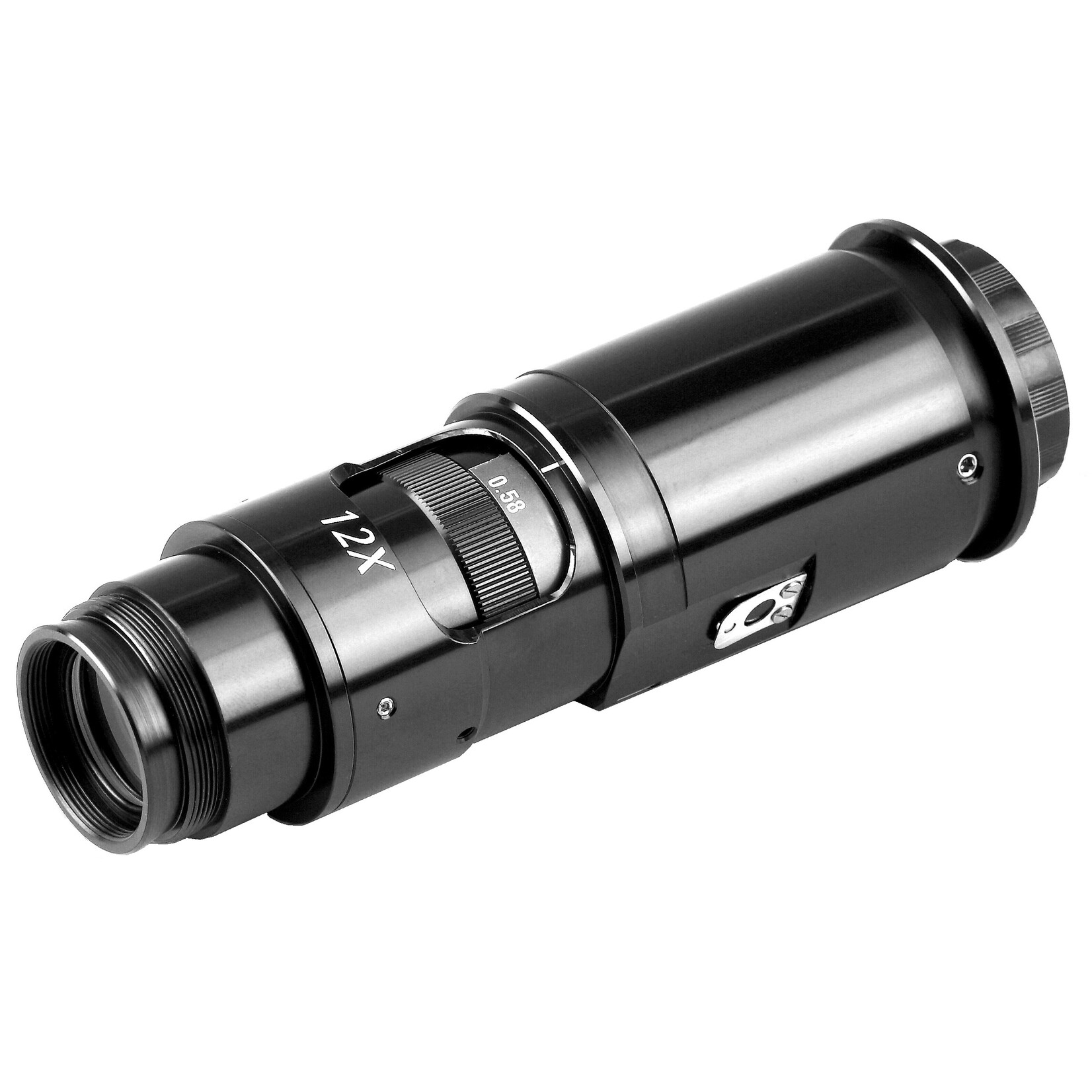The tube of the 12x zoom system contains the core of the zoom mechanism and determines the mechanical nature of your zoom system. Tubes can be zoom or non-zoom configurations. Options include:
Manual zoom modules: Provide flexibility in a variety of imaging applications when an automated system is not required. By manually adjusting the zoom and focus, the user can change the field of view and restore focus when the size of the sample being imaged changes.
Apertures: The iris function allows the user to adjust the amount of light that passes through the system without changing the intensity of the light source. The iris can also improve depth of field when properly adjusted.
Detents: choosing a housing tube with detents allows certain "stops" to be achieved throughout the zoom range. Typically used in systems where each position must be calibrated, detents allow preset stops at 0.58X, 2X, 2.5X, 3X, 3.5X, 4X, 4.5X, 5X, 5.5X, 6X, and 6.5X on the zoom scale.
Fine Focus: For applications without separate moveable carrier systems, Fine Focus housed tubes provide focus over a 3mm (coaxial models only) or 12mm (non-coaxial models) Fine Focus center distance on the object. Available in manual and motorized versions.
Motorized Drive: Automated, motorized control of zoom and fine focus can be requested. Accurate and repeatable positions can be achieved. Various configurations are available to give you flexible options.
Coaxial Illumination: Coaxial illumination is most effective when imaging flat reflective surfaces. By integrating the coaxial illumination port, a collimated, diffused, and uniform illumination source is incorporated into a zoom lens.



